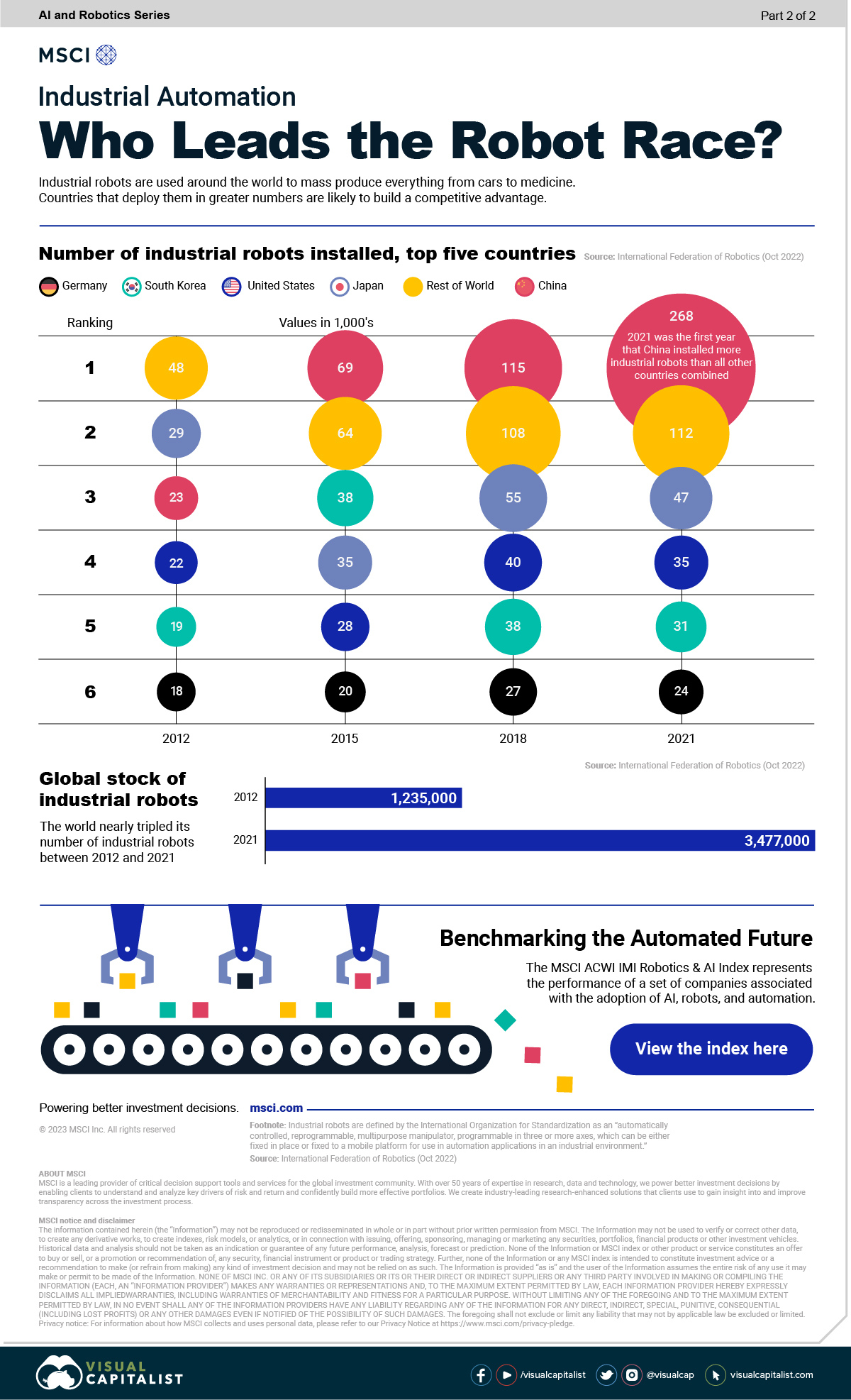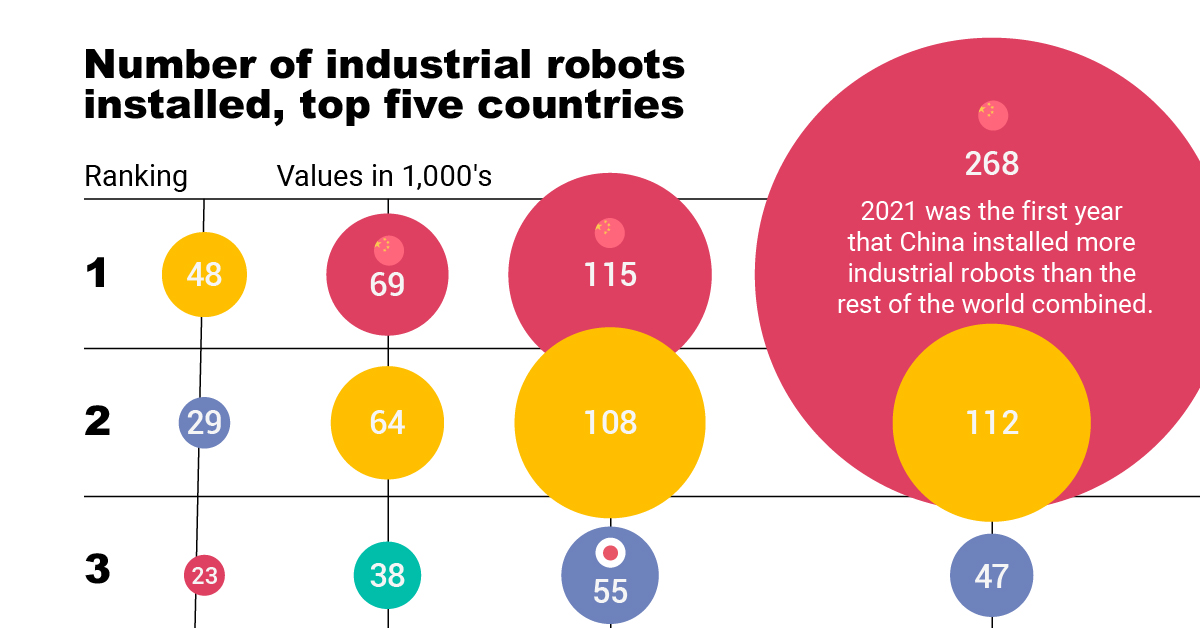Industrial Automation: Who Leads the Robot Race?
Industrial Automation: Who Leads the Robot Race?
The advent of industrial robotics has triggered a wave of automation that is progressively sweeping across global industries. Countries that deploy these robots in great numbers are likely to increase their productivity and lower their costs of production.
With this in mind, the graphic above from our sponsor MSCI ranks the top countries by industrial robot installations.
Data and Highlights
This data was sourced from a 2022 report published by the International Federation of Robotics.
| Country | 2012 | 2015 | 2018 | 2021 |
|---|---|---|---|---|
| 🇨🇳 China | 23,000 | 69,000 | 115,000 | 268,000 |
| 🇯🇵 Japan | 29,000 | 35,000 | 55,000 | 47,000 |
| 🇺🇸 U.S. | 22,000 | 28,000 | 40,000 | 35,000 |
| 🇰🇷 South Korea | 19,000 | 38,000 | 38,000 | 31,000 |
| 🇩🇪 Germany | 18,000 | 20,000 | 27,000 | 24,000 |
| 🌍 Rest of World | 48,000 | 64,000 | 108,000 | 112,000 |
It may not be surprising that China leads the world in industrial automation, given its prowess in mass production. In fact, in 2021, China installed more industrial robots than all other countries in the world combined.
According to the IFR report, 56% of the robots that China installed in 2021 were deployed in automotive or electronics-related industries. The same trend can be seen in Japan, with 53% of its 2021 installations also being in those two industries.
America’s installations were more evenly distributed, with 36% dedicated to automotive and electronics. Other major sectors were metals and machinery (11%), plastics and chemicals (10%), and food (10%).
Robotics for the Future
Falling birth rates and the aging of the baby boomer generation suggest that many of the world’s biggest economies will eventually experience labor shortages. This is evidenced by the constrictive population pyramids of Japan, the U.S., Europe, and even China.
The IFR believes that robotics can help to solve this problem, not just in manufacturing, but also in critical industries like agriculture and healthcare.
For example, robotics are expected to become more common in the surgery room, where they can perform intricate procedures with the help of artificial intelligence. The market for surgical robots is expected to reach over $20 billion by 2030, up from $4.4 billion in 2020.
Given the vast array of use cases, robotics and AI are two technologies that could rapidly transform our world over the coming decades. Investors can gain insight with the MSCI ACWI IMI Robotics & AI Index, which benchmarks an investable universe of companies associated with automation.

Explore the MSCI ACWI IMI Robotics & AI Index now

-

 Technology17 hours ago
Technology17 hours agoAll of the Grants Given by the U.S. CHIPS Act
Intel, TSMC, and more have received billions in subsidies from the U.S. CHIPS Act in 2024.
-

 Technology2 days ago
Technology2 days agoVisualizing AI Patents by Country
See which countries have been granted the most AI patents each year, from 2012 to 2022.
-

 Brands4 days ago
Brands4 days agoHow Tech Logos Have Evolved Over Time
From complete overhauls to more subtle tweaks, these tech logos have had quite a journey. Featuring: Google, Apple, and more.
-

 Technology2 weeks ago
Technology2 weeks agoRanked: Semiconductor Companies by Industry Revenue Share
Nvidia is coming for Intel’s crown. Samsung is losing ground. AI is transforming the space. We break down revenue for semiconductor companies.
-

 AI3 weeks ago
AI3 weeks agoThe Stock Performance of U.S. Chipmakers So Far in 2024
The Nvidia rocket ship is refusing to slow down, leading the pack of strong stock performance for most major U.S. chipmakers.
-

 Technology3 weeks ago
Technology3 weeks agoRanked: The Most Popular Smartphone Brands in the U.S.
This graphic breaks down America’s most preferred smartphone brands, according to a December 2023 consumer survey.





